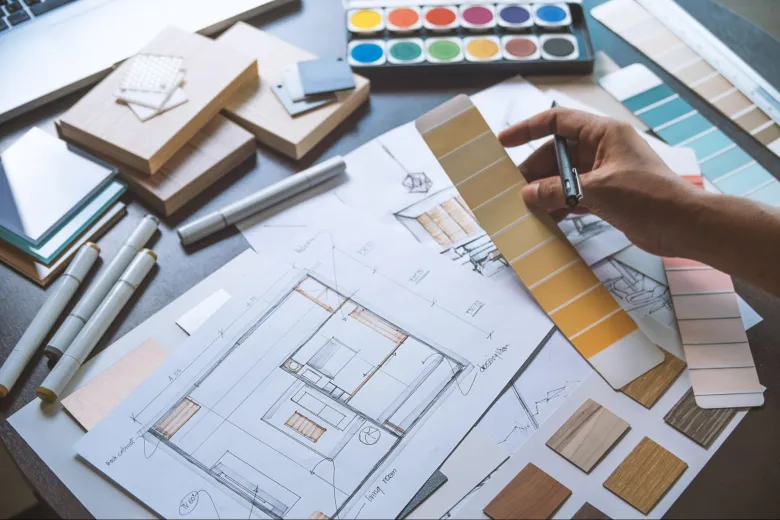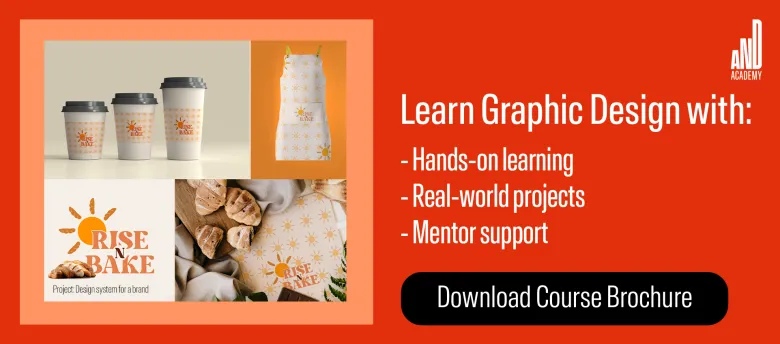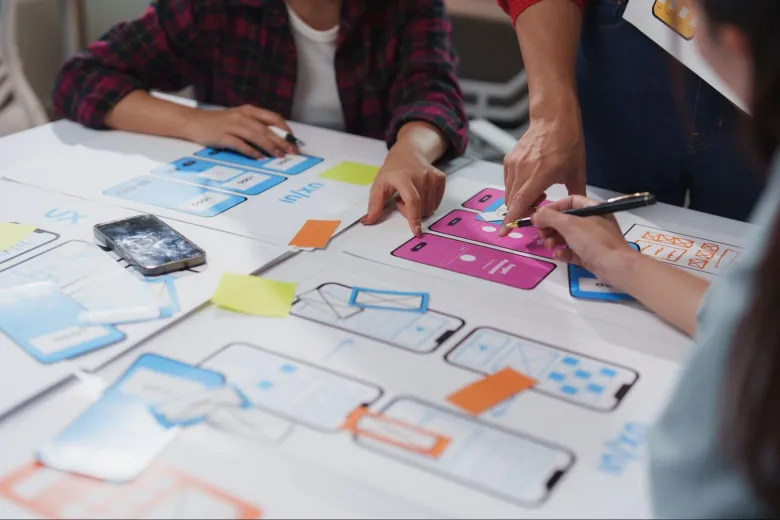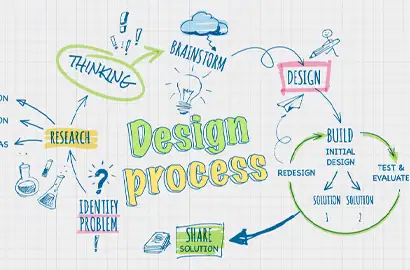Want to move from your conventionally safe education or job to the exciting field of Design? Read to know how you can make this shift and why it’s a great choice.
Have you ever felt the urge to pick up a brush when studying Math? Or perhaps, you have been thinking about the latest interior design trends when you should be focusing on the formulas in your Excel sheet? It is a fairly common practice to choose an educational journey and a job that feels “safer”. But if you find yourself thinking about what it would be like to be a designer, then we are here to guide you through that shift and assure you it can be done!
If you are thinking of following your passion and pivoting to design, there is no better time than now! Design does not have to be just a passion, hobby, or a dream. It can become a full-blown career, too. And yes, it comes with a lot of scope for professional, personal, and financial growth as well.
In this guide, we will be offering insights on how you can start your Design journey and ace it. So, let’s dive in!
Here’s what we will be covering.
- Is Shifting to Design Actually Risky?
- Transition from Safe to “Risky” – Navigating a Design Career in 2025
- How Can a Non-Design Background Benefit You
- Major Challenges and How to Overcome Them
- How Can AND’s Courses Help with this Transition?
- Conclusion & Next Steps

Is Shifting to Design Actually Risky?
Design may not be the traditionally “safer” option as per the majority, but it is not the complete risk most make it out to be. While the idea of moving from a perceived “safe” career to design often conjures images of instability, in an industry that is supposed to be “dying” because of the rise of AI, this scenario is simply not true. Design is not a stagnant field; rather, it is super dynamic, and this makes it highly inclusive of people with varied skill sets.
Also, fields like graphic design, visual communication, UI UX design, motion graphics, branding communication, etc., have never been more relevant than now. Many businesses are investing substantial resources in these functions to create distinct identities for themselves in saturated markets. In fact, with real estate booming, there is no dearth of opportunities for interior designers and interior decorators as well.
The design industry has many opportunities to offer, and they are not limited to a single domain or specialization. It is a growing industry where one can find their footing with adequate skill and training. While the anxieties about rising advancements in AI are valid, they should not stop you from exploring the field that is opening up new avenues with every advancement. After all, there are many courses in the market, like AND’s design courses, that train you in things like design strategy and design thinking, which AI cannot master, ensuring your design job never gets replaced by AI.
To sum up: shifting to Design after a safer educational and professional journey can feel a little risky, but with the right approach, it is totally worth it and can take you to success!

Transition from Safe to “Risky” – Navigating a Design Career in 2025
If you have decided to pivot to Design, the natural next question is- how do I make it happen? Here’s a brief guide for how you can shift to a design career in 2025.
1. Back to School: Get Design Education
You don’t necessarily need a degree to have a career in design. But it does help to get some education. It is essential to learn the basics and principles and have foundational knowledge to bank on. You can use free online resources or enroll in a paid design course to get acquainted with concepts like design thinking, the design process, etc. It will also help you focus your learning in a structured manner so you do not get lost in the sea of information.
2. Key Skills to Focus On
Design is much more technical than most people perceive it to be. To make it in the field, it is important to focus on certain skills and excel in them. Knowing how to use design software like Adobe Illustrator, Photoshop, Figma, etc. is essential. Apart from the tools, learning and mastering concepts like color theory, typography, branding, logo design, etc., are also important for a successful transition.
3. Build an Impressive Portfolio
In the Design industry, your portfolio is your identity. You must create a portfolio of works that represent your style and design process. For example, when creating a UI UX design portfolio, include case studies that explain your design thinking, approach, and the impact of your work. Use platforms like Behance and Dribble to showcase your work to a wider audience. You can check out this project by AND Learner, Aromal Jose Baby, for inspiration!
4. Prioritize Networking and Mentorship
Having a mentor who can guide you in the right direction can be an incredibly valuable asset for your career transition to design. It is important that you connect with other designers and learn from their work and journeys to understand your own. Having like-minded friends and mentors in the design community can also be a great way of improving your skills and pivoting a career in the field.
5. Keep Creating and Sharing!
Learning design is not linear, so keep creating and experimenting. Also, make sure to share your designs with your friends to get feedback. You can also leverage social media to share your work with the world. The more you share your work, the more visibility you get and hence, the more chances you have of succeeding as a designer.

How Can a Non-Design Background Benefit You?
A non-design background can actually be a blessing in disguise for your design career. It is a strength that you can use in your favor to build a successful career. Here is how.
1. Transferable Skills
Various technical or business fields require you to develop soft skills like problem-solving, communication, analysis, time management, leadership, collaboration, and more. These skills are highly valuable for designers who need to work on different projects with varied stakeholders. Such skills can really help distinguish you from the rest if you apply them correctly.
2. Diverse Perspectives
Coming from a different industry means you also come with a different perspective. It allows you to think from a different angle and bring in fresh points of view to projects. A different background allows you to break away from traditional design ideologies and create new methods that may result in unique and successful designs.
3. Domain Expertise
If you decide to design for an industry you have already worked in or studied, you can use your domain expertise to improve the quality of design outcomes. With an in-depth understanding of the industry trends and needs, you can create designs that are intuitive and relatable.
4. Adaptability
Shifting from a safer professional path to design can help you become more adaptable to change and build resistance. These are crucial qualities in a designer, as their work involves constant learning and re-learning. It can also help you become more adaptable to constantly changing industry trends.

Major Challenges and How to Overcome Them
Shifting to design after pursuing something else can be difficult. Here is how you can overcome the most common challenges and ensure your journey does not suffer from what can be avoided.
1. Learning the Fundamentals
The initial learning curve can feel steep. However, you can easily overcome this by committing to structured learning, whether through formal education in the form of design courses or self-study. Most importantly, you must practice consistently and focus on mastering one thing at a time to not get overwhelmed.
2. Explaining the Career Shift
In job interviews, you will be asked reasons for your career shift to design. It is important to connect your past experiences and how they are useful in impacting your design processes and strategy. Prepare detailed notes and rehearse your answers so you do not get flustered during interviews.
3. Financial Planning
A career transition might involve a temporary dip in income, especially if you opt for full-time education or start in entry-level roles. You must prepare yourself financially and mentally for this. Plan your finances and allocate them carefully to ensure stability during the transition period.
4. Imposter Syndrome
When you enter a new field, it is common to feel like an imposter. However, design is not an exclusive field. In fact, you will find many professionals from different backgrounds in it. Focus on your strengths and the fresh perspective you bring. Seek feedback and celebrate small victories to keep your confidence intact.

How Can AND’s Courses Help with this Transition?
AND Academy offers comprehensive part-time online courses that are especially curated for a wide range of learners. Our industry-focused curriculum is perfect for individuals who want to learn from scratch and are shifting to the design industry without any prior background or experience.
Our mentors focus on teaching the design process and principles that help you build your design skills from the start. We will teach you everything you need to know about design and more. We offer personalized mentorship and feedback to help you build on your strengths and achieve your design goals.
AND Academy’s focus on building a community means you can interact with like-minded designers through our regular peer review sessions and an annual meetup. We have a strong alumni network that new designers can benefit from. We also offer life-long career support so you can achieve your professional objectives without a hitch!
For those without any background in design and transitioning from other fields, AND Academy offers a safe space to explore your talents and passions, without any judgment!
Conclusion & Next Steps
Design might be a risky choice, but it is a worthy one. The Design industry has a lot to offer, and with a little effort and time, you can be the perfect recipient. We hope this guide helped make your career transition plans a little clearer.
AND Academy always strives to offer the best design education to those interested in making a career in the field. If you have made a decision to finally pivot, we have a range of courses that can support your decision. Here is a list of our courses available across three disciplines –
Graphic Design Courses
- Graphic Design Certificate
- Graphic Design Diploma
- Graphic Design PG Diploma (Part-time)
- Graphic Design PG Diploma (Full-Time)
UI UX Design Courses
Interior Design Courses
If you need further assistance, you can get in touch with our course advisors for detailed information on our course offerings.
Note: All information and/or data from external sources is believed to be accurate as of the date of publication.






